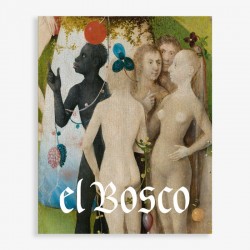
Checa Cremades 2016
“The Fire and the Owl: On the Reception of Bosch’s work by the Spanish and Flemish Habsburg Courts in the Sixteenth Century” (Fernando Checa Cremades) 2016
[in: Pilar Silva Maroto (ed.), Bosch – The 5th Centenary Exhibition. Exhibition catalogue (Madrid, Museo Nacional del Prado, 31st May-11th November 2016), Museo Nacional del Prado, Madrid, 2016, pp. 156-171]
[Spanish version: Fernado Checa Cremades, “El fuego y la lechuza. Sobre la recepción del Bosco en las cortes flamenca y española de los Habsburgo en el siglo XVI”, in: Pilar Silva Maroto (ed.), el Bosco – La exposición del V centenario. Exhibition catalogue (Madrid, Museo Nacional del Prado, 31st May-11th November 2016), Museo Nacional del Prado, Madrid, 2016, pp. 156-171]
The first part of this essay focuses on the Habsburg court in Flanders and in Spain and on its attendant nobles and courtiers who owned works by Bosch: king Philip II, Henry III of Nassau-Breda, Engelbert II of Nassau, Mencia de Mendoza, the Guevara family, Don Fernando Alvarez de Toledo (3rd Duke of Alba) and his illegitimate son Don Fernando. Many of these pieces found their way into Philip II’s collection.
The second part of the essay focuses on three written testimonies (by Ambrosio de Morales, Felipe de Guevara and Fray José de Sigüenza) which provide evidence of the link between the first aristocratic collectors of Bosch’s work and Philip II’s Spanish court.These written testimonies point out that the reception of Bosch’s oeuvre in the court of Philip II was surprisingly classicist. In a short essay (published in 1586) Ambrosio de Morales compared Bosch’s Haywain with an ancient Greek painting, the Table of Cebes. Bosch’s oeuvre is laid open to what might be termed a ‘classical’ reading, an approach closely linked to contemporary ideas regarding some of the lost paintings of ancient Greece. Circa 1560 Felipe de Guevara wrote his Comentario de la pintura y pintores antiguos, drawing heavily – but not exclusively – on Pliny’s writings concerning classical painters. Guevara focuses less on the moralizing or edifying message of Bosch’s works than on aesthetic considerations characteristic of the Renaissance (decorum, marvellous qualities, rareness and ingenuity, expression of feelings and emotions). In 1605 José de Sigüenza published his Historia de la Orden de San Jerónimo. In chapter 17 of Book III he also writes about Bosch. Sigüenza links Bosch’s paintings to the ‘macaronic’ style (a grotesque, satirical genre), practised in the sixteenth century by Merlin Cocaio. Sigüenza also refers to Ovid and describes the Garden of Delights using adjectives directly drawn from classical aesthetic theory.
Checa ends his essay with an interesting observation. In the sixteenth century the Garden of Delights was placed in the Queen’s Gallery of the Escorial monastery nex to copies of Bassano’s Flood series. Although Sigüenza makes no mention of it, could this mean that at the Spanish court Bosch’s Garden was interpreted as a representation of the Sicut erat in diebus Noe theme?
[explicit 21st January 2017]